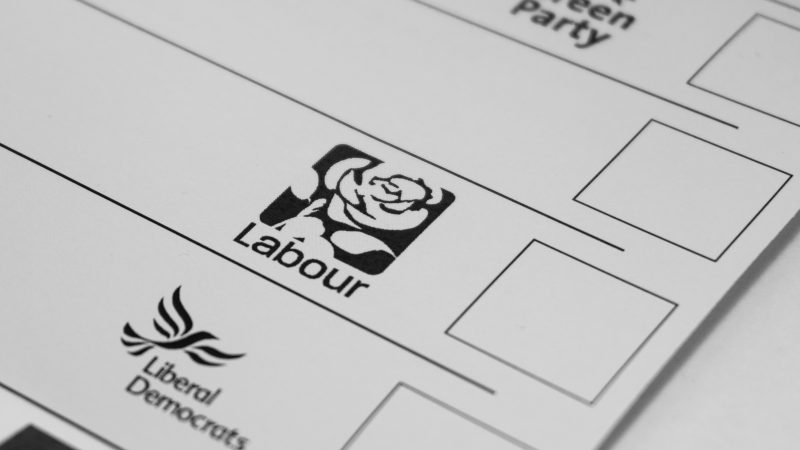
It is much easier for the Conservatives to lose the next election than it is for Labour to win it. A swing of 3% costs the Conservatives their majority. One of around 12% would deliver Labour 124 gains and an overall majority of just two seats. The Labour Party was created more than a century ago yet has only achieved such election feats three times: 1929, 1945 and 1997. For most people, 1997 has been their only lived experience of a Labour victory of the scale required at the next election – with its swing of 10%. It may just be me, but I sense no whiff of 1997 in the air of our present politics.
Labour has certainly led consistently in the opinion polls since January 2022 and by wide margins since last October. However, in the monthly poll averages since the 2019 election, the party has reached more than 50% only once, at the height of the Liz Truss car crash. To underline, in each of the 38 months since Boris Johnson secured his comfortable majority, with all that has happened, Labour has only secured the support of more than half of voters one solitary time. Compare that with the 36 months prior to the 1997 election when Labour’s poll average was consistently 50% or more.
There are also differences when we look at parliamentary by-elections. In the 1992-7 parliament, Labour‘s three by-election gains were achieved with swings of 29% in Dudley West, 22% in Staffordshire South East and 17% in Wirral South. In the 2019 parliament, Labour’s one gain (so far), Wakefield, was won on a swing of 13%.
One significant component of Labour’s 1997 total of 418 MPs was the 56 who were elected in Scotland, where there were then 72 constituencies. Following the establishment of Holyrood, from the 2005 Westminster election onwards, the total of Scottish seats was reduced to 59. Labour still managed to win 41 seats at that election, and without those Scottish MPs, Tony Blair would not have secured his final majority.
Since then, the picture for Scottish Labour has been bleak. In the three Westminster elections since the 2014 independence referendum, two delivered a solitary Scottish Labour MP, and even the better result in 2017 took the total to just seven. The new SNP leader will certainly face a considerable challenge to maintain the party’s near total dominance of Westminster seats at the next election, but we lack evidence so far that Labour will surge back. In 1997, one in seven Labour MPs came from Scotland: in 2019, there was only one Scottish MP out of Labour’s national total of 202. It is difficult to see how Labour can build a majority in parliament without those figures changing dramatically.
At the heart of any analysis of the prospects of Prime Minister Keir Starmer is the Labour catastrophe at the 2019 election, which resulted in the party’s smallest total of MPs since 1935. It is the sheer magnitude of this legacy that really fuels scepticism about the prospect of an overall Labour majority, rather than the leadership or party policy.
These latter elements are, of course, vital: voters need to be confident as they go to vote that the Labour leader is made of prime ministerial material and supported by robust, practical policies that will benefit them, their families and the country. The opinion polls offer a mixed bag of evidence on these issues. Starmer has struggled to build an unassailable lead on the question of whether he would make the best Prime Minister. The ‘partygate’ scandal that led to Johnson’s resignation and the catastrophic weeks of Liz Truss’s premiership has certainly helped shift opinion in his direction, but Rishi Sunak is neither of these people, and relentless Conservative incompetence is not necessarily guaranteed in the run-up to the next election. Consolidating Starmer’s present standing in the polls is a work in progress.
On the policy front, Labour has made definite inroads. In most polls, they are trusted to run the economy better than the Conservatives, more likely to control inflation and even ahead of the Conservatives as the best party on taxation. Most previous Labour leaders would have died for ratings such as these on issues that the Conservatives have traditionally dominated. If these figures remain the same by the time of the next election, then the fate of the Conservative Party is sealed.
The present Labour lead in the polls is very impressive, and if duplicated at the next election, the party will crash through the 124-seat barrier and secure a working majority. But popping the champagne corks may be a little premature. As stated earlier, in the three years prior to Labour’s landslide 1997 victory, the party registered monthly poll support of 50% or more, yet when it came to polling day, Labour received 44% of the vote.
We are told that all things are possible, but most of us stumble through life wrestling with what is probable. My own judgement is that Labour has not yet sealed the deal with the electorate that it needs to in order to climb the mountain that the 2019 election created. Starmer has convinced many more voters that he can fulfil the role of the UK’s next Prime Minister, and Labour has unquestionably gained momentum over past months – enough to demolish the Conservative majority at the next election but not enough (in my opinion) to secure a majority of its own. The great American writer Damon Runyon once observed that the “the race may not always go to the swiftest, nor the fight to the strongest, but that’s the way to bet”. I won’t be visiting the bookies anytime soon.




More from LabourList
Majority of Labour members oppose government’s anti-migration measures
‘First past the post is corroding trust in politics. The government must make all elections fit for the future’
‘Hope starts young: Why Labour must tell the story of a better tomorrow’